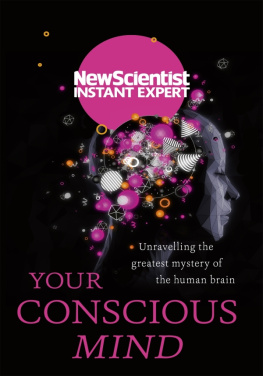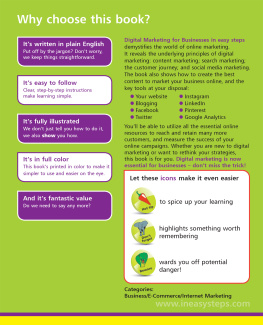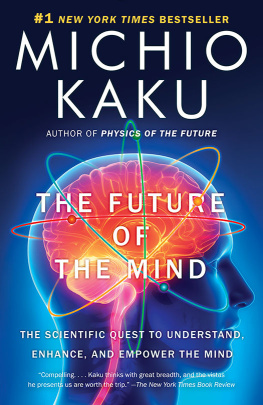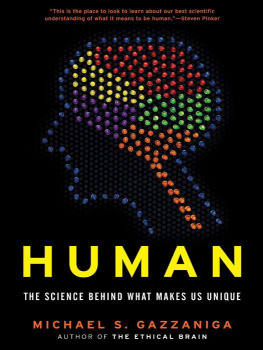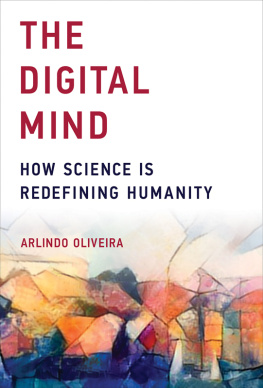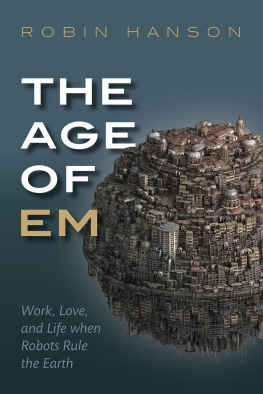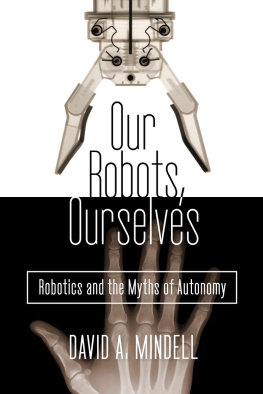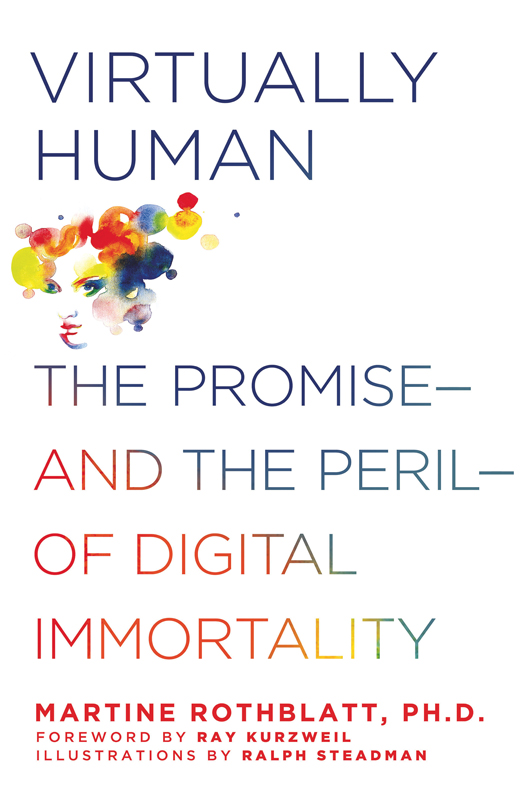Contents
Guide

The author and publisher have provided this e-book to you for your personal use only. You may not make this e-book publicly available in any way. Copyright infringement is against the law. If you believe the copy of this e-book you are reading infringes on the authors copyright, please notify the publisher at: us.macmillanusa.com/piracy.
[CONTENTS]
ONE: |
TWO: |
THREE: | |
FOUR: | |
FIVE: |
SIX: | |
SEVEN: | |
EIGHT: | |
NINE: | |
TEN: |
[FOREWORD]
In Virtually Human, Martine Rothblatt provides a compelling and convincing case for virtual humans. After all, what difference does it make if our mental circuits are biological or electronic if the result is the same? She stakes out the scientific case that we will see such humans within a small number of decades and persuasively examines the philosophical and social implications. Both she and I have been articulating this case since we met fifteen years ago.
In my 1999 book The Age of Spiritual Machines (ASM), I made the scientific case that we will see human-level intelligence in a machine by 2029. These artificial intelligences (AIs) will be capable of passing the Turing test, Alan Turings eponymous exam to determine if an AI is indistinguishable from a biological human (to biological human judges) using an instant messaging conversation.
A conference of AI experts was held at Stanford shortly after the publication of ASM and the consensus then was that human-level AI would indeed happen but not for hundreds of years. Several lines of criticism of ASM emerged such as Moores law will come to an end, hardware may indeed be expanding exponentially but software is stuck in the mud, consciousness and free will are impossible in machines, human-level AI may be feasible but is not desirable for biological humans, and others. I wrote The Singularity Is Near (TSIN) to address these criticisms, which was published in 2005. In 2006, a conference called AI@50, was held at Dartmouth to mark the fiftieth anniversary of the 1956 Dartmouth conference that gave artificial intelligence its name, and the consensus at that meeting was that human-level AI was only twenty-five to fifty years away. Ive stuck with my 2029 prediction, which is now a median view and there is a growing group of people who think I am too conservative.
One piece of evidence of the expanding power of AI is IBMs Watson, which won a televised Jeopardy! contest against Brad Rutter and Ken Jennings, the best two (biological) human players in the world. Indeed Watson got a higher score than Rutter and Jennings combined. Critics often like to dismiss the significance of AI by saying that it may be good at narrow skills such as playing chess or driving a car but machine intelligence does not have the broad and subtle powers of biological human intelligence. But Jeopardy! is not so narrow a task. It involves the ability to reason over all human knowledge and the queries are presented in natural language including puns, metaphors, riddles, and jokes. For example, Watson got this query correct in the rhyme category: A long tiresome speech delivered by a frothy pie topping. The query stumped Rutter and Jennings, but Watson quickly responded: What is a meringue harangue?
What is not widely appreciated is that Watsons knowledge was not hand coded by the engineers. It got its knowledge by reading Wikipedia and several other encyclopedias, all natural language documents. It does not actually read these documents as well as you or I. It might read one page and conclude that there is a 56 percent chance that Barack Obama is president of the United States. You might read that page, and if you didnt happen to know this ahead of time, conclude that there is 98 percent chance. So you did a better job at reading and understanding that page. But Watson makes up for its relatively weak reading by reading more pages, a lot more, 200 million pages in all. And it has a good Bayesian reasoning system to combine all of its inferences so it can conclude overall that there is a 99.9 percent likelihood that Barack Obama is president. And it can do this type of reasoning on all 200 million pages that it has read in the three-second Jeopardy! time limit.
Thus one significance of AIs actually reading at human levels, which I maintain will happen by 2029, is that they will then be able to combine their human-level understanding with Internet scale and thereby apply that comprehension to tens of billions of documents.
So what will the significance be of the advent of human-level AI? A lot of science futurism movies such as Terminator conclude that these AIs will have little use for biological humans. But if we examine the trajectory of AI, indeed the entire history of invention, we can come to a different conclusion. Thousands of years ago, we were unable to reach the fruit at that higher branch, so we fashioned a tool that extended our physical reach. We then created tools that expanded the strength of our muscles so we were able to build giant pyramids in the desert. Today, we can access all of human knowledge with a few keystrokes with devices we hold close to our bodies. And the distribution of contemporary AI is not limited to a few wealthy corporations or government agencies but are in billions of hands. We have thus expanded our physical and mental reach, and that will continue to be the case as AI at human levels and beyond become a reality.
A key message of ASM and TSIN is that the price-performance and capacity of information technologies expand at an exponential pace, currently doubling about every year, a phenomenon that I call the law of accelerating returns. At the same time, the physical size of these technologies is shrinking at a pace of about one hundred in three-dimensional volume each decade. So computational devices in the 2030s will be the size of blood cells and we will introduce them into our bodies and brains noninvasively.
One application will be to health. Artificial T cells will expand the capability of our immune system. Today our biological immune system does not recognize cancer (it thinks that its part of you) and is unable to cope with retroviruses. We will be able to finish the job with a nonbiological immune system that will download new software from the Internet to deal with new pathogens.
These nanobots will also go into the brain via the capillaries and connect our neocortex (the outer layer of the brain where we do our thinking) to the cloud. So today, just as we can access many thousands of computers in the cloud when we need them, in the 2030s and beyond we will be able to access additional neocortex to think deeper thoughts.
In my recent book, How to Create a Mind, I describe the neocortex as a self-organizing system of about 300 million modules, each of which can learn, remember and process a pattern. These modules are organized in a hierarchy and we create that hierarchy with our own thinking. Only mammals have a neocortex, so when the Cretaceous Extinction Event (a violent sudden change in the worldwide climate probably caused by a meteor) occurred 65 million years ago, the ability of the neocortex to quickly devise and master new skills resulted in mammals overtaking their ecological niche.




